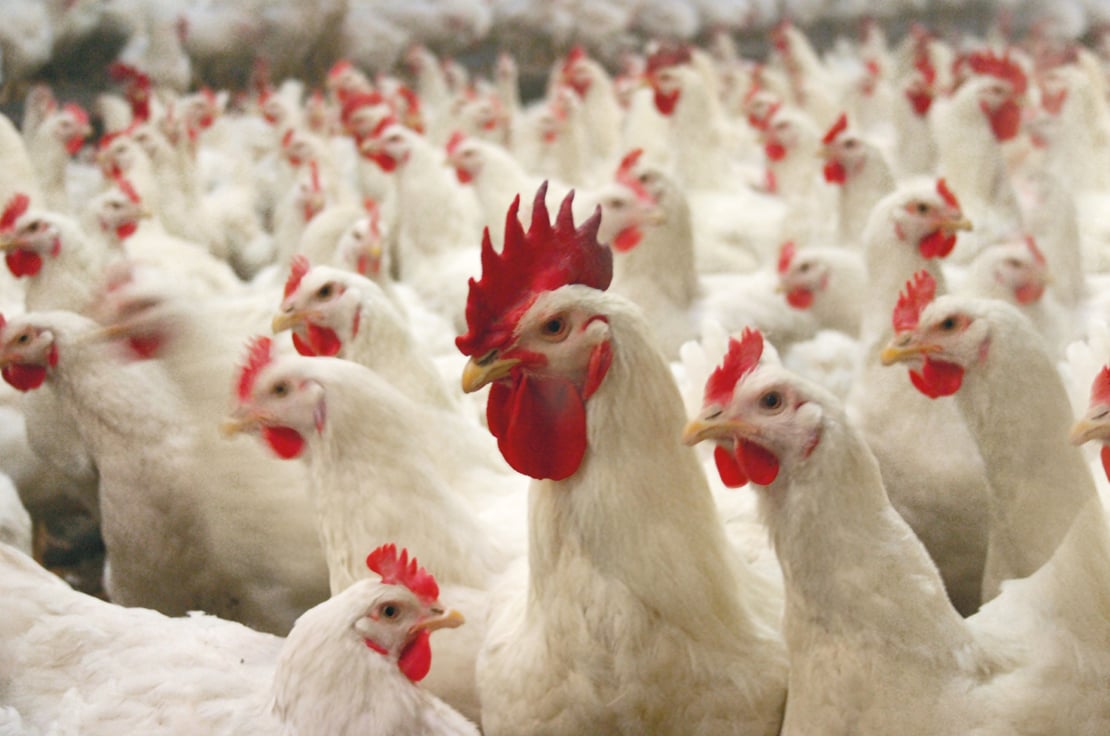"About 10 years ago I visited a farm abroad to solve a problem. There was a flock of hens of 34 weeks, but the customer had put in a lot of roosters: 20% instead of the usual 8%. Too many roosters had been chasing the hens so they didn’t have any feathers left on their back. A hen without feathers does not like to be mated. Getting a heavy rooster on your bare back is not pleasant at all. ” Wim Peters is a Poultry Specialist with 30 years+ of experience working at Vencomatic Group, he regularly helps broiler (breeder) farmers. For example, how to manage their roosters and hens to ensure optimal performance of the birds.
What challenges do you face when defining what good rooster management is?
"The biggest challenge in broiler breeder management is to get enough chicks hatched from the eggs, i.e. fertilization. After all, an unfertilized egg is worthless. To get as many fertile eggs as possible, good rooster management is essential, which means getting the right ratio between hens and roosters as well as providing dedicated feed management for hens and roosters, these will be outlined below:
- Bad vs good roosters: You should remove 'bad' roosters as soon as possible. For example, when they are no longer fertile or cannot compete with other roosters. They can often be recognized by their bleak comb and wattles, hanging wings, or by their dull expression. A rooster has to show dominant behavior, he has to protect his hens. A good rooster shows himself: if he hides in the nest, this is usually a bad sign. Although it is unlikely the hens in his harem will be mated by other males, this can still happen by accident….
- Ratio of males to females: A usual ratio is 1 male to 10-12 females, but a good male can easily keep up with 20 females. As a rule, we start at 25 weeks at 8.5%, or 1 to 12. The challenge is always to have enough good males, it is better to have fewer good males than many bad ones. At 42 weeks a moment called ‘Spiking’ is often part of the process, during which a max of 2% new, young roosters of 26-27 weeks of age will be added to the flock. This allows the reproduction numbers to remain at the right levels.
- Feed management: You should not only have a separate feeding system for males and females it is also recommended to provide different feed to the hens and roosters. The feed of hens contains 3.5% calcium required for the production of the eggshell. For roosters, 1% is already sufficient. A hen needs between 16 and 18% protein, and a rooster only 12%. A good rooster isn’t fat so a lower protein diet will help to control growth better. It is important that the rooster doesn’t get too heavy as he won’t be able to mate that efficiently with his hens anymore.
- Courtship: In the animal world the female must be courted, this is also important for the hens on a broiler breeder farm. Broilers are not bred for behaviour, but mainly for production traits, delivering high-quality meat while doing this at the lowest feed conversion rates. Roosters at a broiler breeder farm might court their hens less, but they still need to do their job. So the better the dynamic between the roosters and the hens in a house, the better the overall business performance.
Read the whitepaper to discover more about the important factors for optimal wellbeing of broilers and maximizing value for farmers.












.png?width=160&height=132&name=Egg%20packers%20-%20Vencomatic%20Group%20(2).png)
.png?width=160&height=132&name=Meggsius%20Select%20-%20Vencomatic%20Group%20(2).png)











.jpg?width=240&name=LEV_5592%20(Gemiddeld).jpg)

